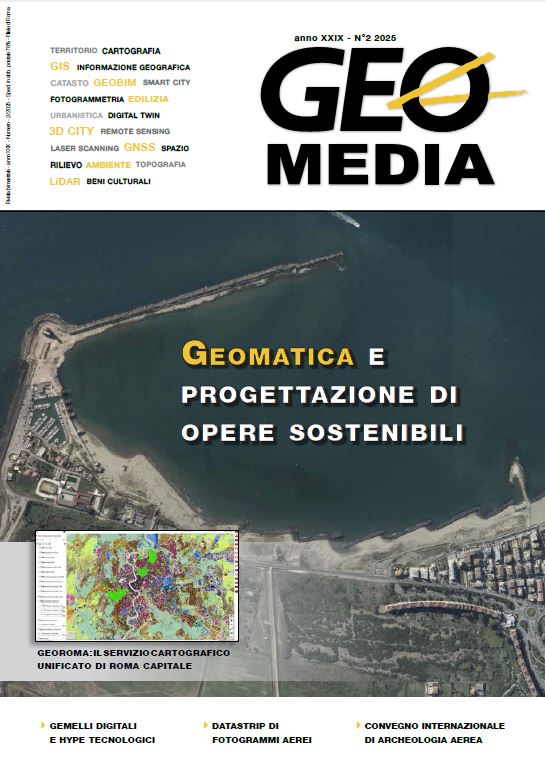I porti di Fiumicino. Quale sostenibilità?
Parole chiave:
costa, porto di fiumicino, sostenibilità, batimetria, cartografia, ambienteAbstract
On the small coast of Fiumicino, where the Tiber flows into the sea, the largest river in peninsular Italy, which was historically
the gateway to ancient Rome as evidenced by the ruins of Trajan's port and ancient Ostia there, the construction of two ports for international traffic of cruise ships and commercial ships is planned (one is not yet authorized, the other is under construction in a first batch). We would all have expected that public institutions would decline every approval act according to principles written in the Constitution and in the PNRR of sustainable economy, environment, planning, resilience. But it is very difficult to find in the project's illustrative documents and especially in the formal approval acts, of a process that began several years ago, the reference to these principles and above all the answers to the many questions posed precisely with the intent of ensuring compliance. Of the two projects, the one that represents the real emergency, because its approval is in progress, is the port of Fiumicino-Isola Sacra, a private port, which should host cruise ships. It would be located behind the northern "brush" that protects the mouth of the Tiber, in a 2 km long portion of the coast including, to the south, the mouth of the Tiber and, to the north, the navigable canal of Fiumicino. This artificial canal, today called the Fiumicino canal-port, connects the sea to a bend of the Tiber, and thus delimits that area surrounded by water, the Tiber, the Fiumicino canal and the coast of the Tyrrhenian Sea, which takes the name of Isola Sacra and which was formed in recent centuries with the sandy deposits brought by the river and with the marine currents created by the waves.
The second port, of which the first lot "the fishing dock" is already under construction, is located on the northern bank of the
mouth of the Fiumicino canal and is managed by the public Authority of the Port System of the Central-Northern Tyrrhenian
Sea.
The construction today of two commercial ports, in a stretch of vulnerable coast and subject to an unstable dynamic equilibrium, contrasts enormously with all the principles of sustainability and respect for the environment well recalled even in the Italian Constitution. Given that the commercial port of the Port System Authority is planned in an old abandoned maritime
industrial area, although close to a vast natural area included in the Coastal Reserve, the hypothesis of the additional cruise port
of Fiumicino-Isola Sacra arouses total perplexity. Perplexity that becomes incredulity for the fact that today various public institutions, such as the Municipality of Fiumicino and the structure of the Extraordinary Commissioner for the Jubilee, support
its feasibility.
To this it should be added that the real and current port for cruise ships for Rome and central Italy is the port of Civitavecchia,
managed by the same Port System Authority of the central-northern Tyrrhenian Sea, located 50 km north of Fiumicino and
leader in the Mediterranean for cruise ship calls where there is already a terminal in use by the largest companies in the world
(Royal Caribbean, MSC, Costa, etc.).
In this article we briefly discuss the sustainability of the project from various sources.
##submission.downloads##
Pubblicato
Come citare
Fascicolo
Sezione
Licenza

Questo lavoro è fornito con la licenza Creative Commons Attribuzione - Non commerciale - Condividi allo stesso modo 4.0 Internazionale.
Gli autori che pubblicano su questa rivista accettano le seguenti condizioni:- Gli autori mantengono i diritti sulla loro opera e cedono alla rivista il diritto di prima pubblicazione dell'opera, contemporaneamente licenziata sotto una Licenza Creative Commons - Attribuzione che permette ad altri di condividere l'opera indicando la paternità intellettuale e la prima pubblicazione su questa rivista.
- Gli autori possono aderire ad altri accordi di licenza non esclusiva per la distribuzione della versione dell'opera pubblicata (es. depositarla in un archivio istituzionale o pubblicarla in una monografia), a patto di indicare che la prima pubblicazione è avvenuta su questa rivista.
- Gli autori possono diffondere la loro opera online (es. in repository istituzionali o nel loro sito web) prima e durante il processo di submission, poiché può portare a scambi produttivi e aumentare le citazioni dell'opera pubblicata (Vedi The Effect of Open Access).





